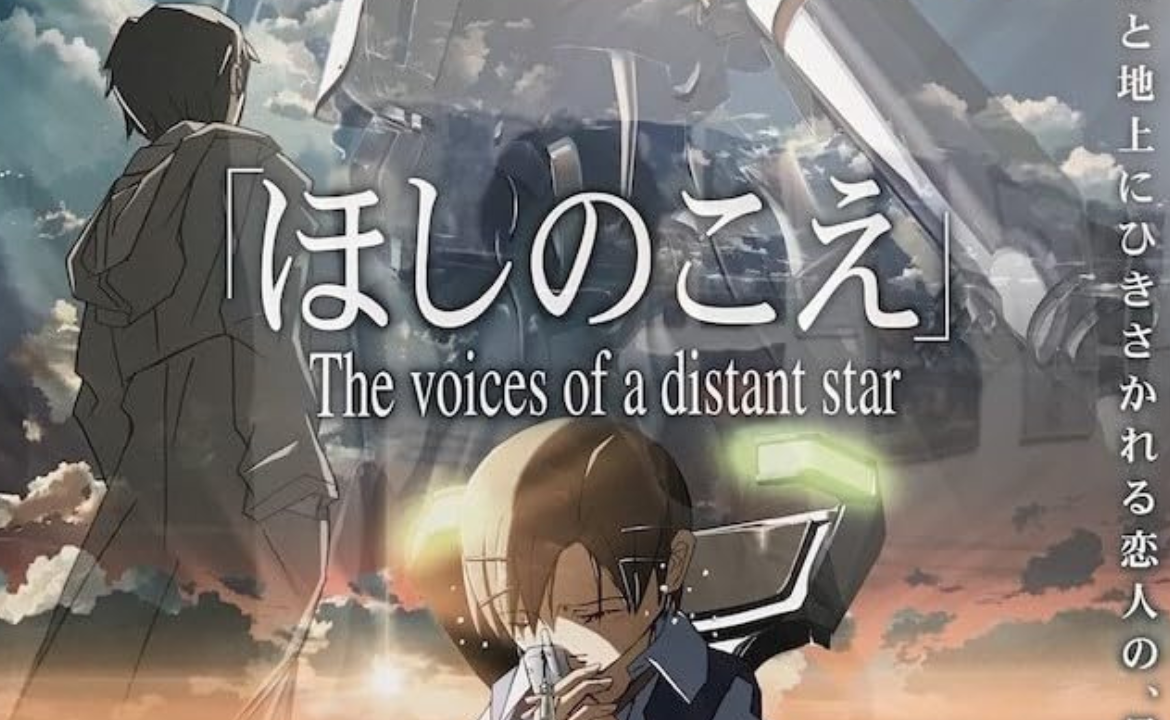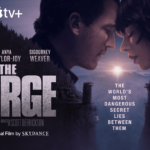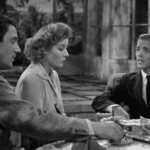Makoto Shinkai is now uttered in the same breath as Hayao Miyazaki, a comparison Shinkai humbly rejects. Still whether fair or not, its true that Shinkai’s many films have not only won international acclaim, and are now beloved worldwide, but ‘Your Name’ in particular has also helped change the landscape of anime films in particular! Now there’s a broader push for more indie anime films to be made, which echoes Shinkai’s own career as he began by self-producing/creating his debut work. To look back at this first short film, ‘Voices of a Distant Star’, is to see the clay of a master in the making not yet fully baked, but still well on the way to the heights he has risen to now.
‘Voices of a Distant Star’ begins in a futuristic Japan when the countries of Earth are at war with an alien race known as the Tarsians. During this time, we follow two friends, Mikako Nagamine and Noboru Tera, in high school, with Noboru portrayed as a rather listless student and Mikako as the driven student who hopes to go to space to join the war effort. She ends up doing just that as she pilots a mech, known as a Tracer, in the UN Space Army, and she travels as commanded to deep space to fight the Tarsians. All the while she begins texting Mikako with the texts taking increasingly longer to arrive, as Mikako gets further and further away from Earth.
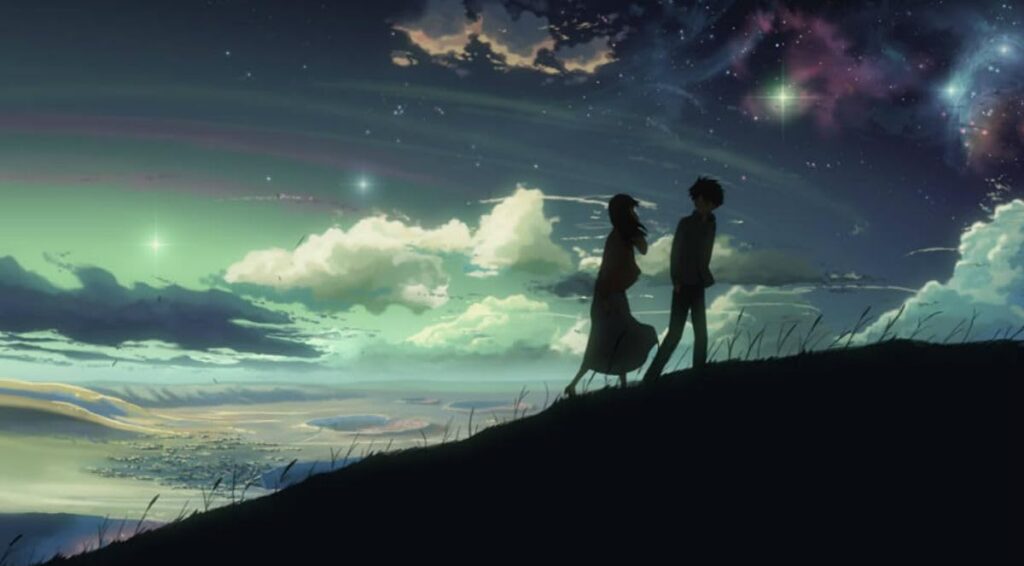
If you ever wanted to examine Shinkai’s themes at the core of his films, then ‘Voices of a Distant Star’ is the perfect starter to analyze all we know of him and his films. In particular, Shinkai features space, both outer space and the space between two people who attempt a connection. We also get a glimpse at Shinkai’s propensity for sci-fi and fantasy, though I’d argue in some of his works sci-fi becomes more background than foreground, while here you could almost mistake the start to be like a typical mech series might. We also get a rather mature portrayal of relationships, and love, especially as we see both Mikako’s and Noboru’s own reactions to their increasing separation. In this way you can see early setups for films such as 5 Centimeters per Second and Your Name. Lastly we also see trademark Shinkai character designs – albeit rough around the edges, and more importantly his gorgeous settings, including wondrous space shots, and beautiful landscapes, which are all the more amazing when you learn that Makoto Shinkai did the majority of this film all by himself.
In fact, Makoto Shinkai and his now wife actually voiced the two leading characters, and this relationship between them inspired key elements of the film. Specifically Shinkai also reportedly told an audience at Comic-Con that the text was inspired by his own texts with his girlfriend. Though it’s all the more incredible that Shinkai not only did the art, animation, and some of the voice acting alongside with his wife, it is also interesting to picture Shinkai as very much in a happy relationship during the making of this, and all his films, when so many of his characters’ relationships are often undefined or strained. Likewise Mikako is very much the stronger, more defined character, so if Shinkai did imagine himself in this role, he certainly gave higher regard to his wife than he himself.
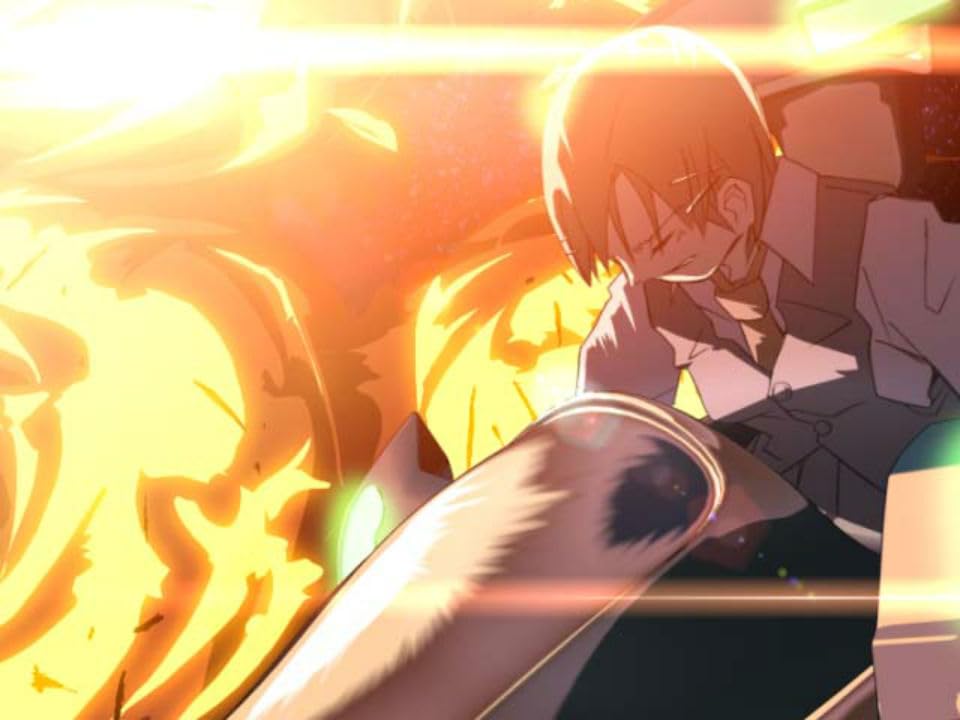
What probably works best about ‘Voices of a Distant Star’, and why I dwelled on it so much thus far, is the familiar Shinkai elements. What’s at least a bit underexplored, though it may be merely window dressing for the setting, is the conflict itself. This is not surprising, and maybe its not even necessary, as my favorite Shinkai ‘The Place Promised in Our Early Days’ similarly sets up a distant macguffin which though important near the end still plays a surprisingly small role. However one could also see if this were a significantly longer film, and maybe one where that mattered more to Shinkai, he could flesh out the conflict in a manner that’d interrogate that element as well, as he hints at perhaps near the end without fully exploring. (There is a manga by Shinkai I’ve yet to read, so maybe he goes further there.)
That to say ‘Voices of a Distant Star’ all these years later is still a feat, of storytelling, and animation, only made all the more impressive considering its small budget and small production crew. Though its still rough around the edges, its no wonder this impressed critics at the time, while helping position Shinkai for the career he has to day. His later films do flesh out his ideas, the art, and the characters, even more than he could here; however, this film remains a testament to the power of story and anime in a way few debuts ever can.
